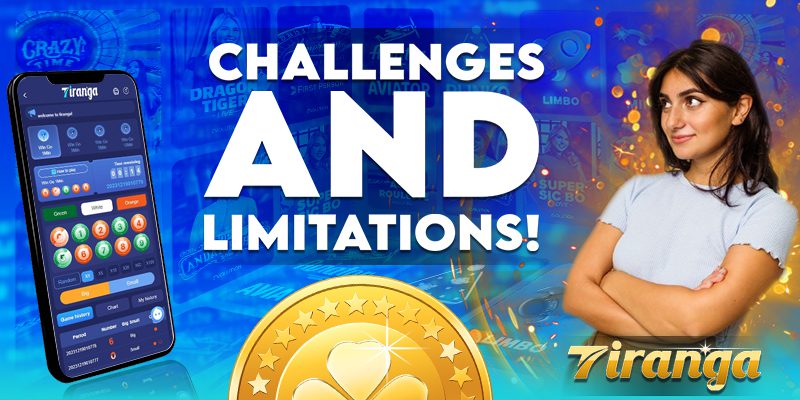
Welcome to the fascinating world of Tiranga Colour Prediction! Have you ever wondered if there’s a secret code behind predicting the outcomes in Tiranga Game? In this blog, we’ll dive into the intricacies of the game, its significance, and the algorithmic secrets that could help you predict the winning colors.
The Tiranga Colour Prediction game is more than just a guessing game. It’s a strategic play where understanding patterns and using algorithms can significantly enhance your chances of winning. Let’s explore how this game works and the strategies behind successful predictions.
Understanding the Tiranga Colour Prediction Game
Tiranga Colour Prediction is a popular game where players predict the outcome of colour combinations. It’s engaging and offers substantial rewards for accurate predictions. This game is part of the larger genre of Tiranga Games, which include various forms of colour-based predictions.
- Basics of the Game: Players choose from a set of colors, usually red, green, and violet. The goal is to predict which color will be chosen next.
- Gameplay Mechanics: The game involves multiple rounds, with each round offering different odds for each color. Understanding these odds is crucial for making informed predictions.
The Concept of Colour Prediction
What exactly is colour prediction in the context of Tiranga Games, and why is it important?
- Defining Colour Prediction: In Tiranga Colour Prediction, forecasting involves predicting which color will appear next based on historical data and patterns.
- Importance of Prediction: Accurate Tiranga Colour Prediction can significantly increase your chances of winning. It’s not just about luck but using data-driven strategies to make informed choices.
Is There a Secret Code? Cracking the Algorithm
The core of Tiranga Colour Prediction lies in understanding and leveraging algorithms:
- Basics of Algorithms: An algorithm is a set of rules or processes followed in problem-solving operations, usually by a computer. Think of algorithms as recipes that guide us through problem-solving.
- Colour Prediction Algorithms: These algorithms help predict color outcomes using historical data and patterns. They analyze past data to forecast future events. The ‘secret code’ lies in these algorithms, which can identify patterns that are not immediately obvious to the human eye.
- Key Factors in Colour Prediction: Factors include historical data, probability, and pattern recognition. By understanding these factors, we can develop algorithms that make accurate predictions in Tiranga Colour Prediction.
Data Collection and Analysis
Data is the backbone of Tiranga Colour Prediction:
- Sources of Data: Data for Tiranga Colour Prediction can come from various sources such as historical game outcomes and user inputs. Collecting a large amount of data ensures the accuracy of the predictions.
- Methods of Data Collection: Data can be collected through gameplay records, online platforms, and direct observation. Each method provides valuable insights that feed into the prediction model.
- Analytical Tools and Techniques: Tools like statistical software and machine learning models can analyze the data to make accurate predictions. These tools help in identifying patterns and trends that are not immediately obvious.
By collecting and analyzing data effectively, we can improve the accuracy of our Tiranga Colour Prediction significantly.
Developing the Prediction Model
Creating a prediction model involves several steps:
- Algorithm Design: Designing an algorithm involves selecting the right variables and setting the rules for predictions. It’s about creating a model that can process data and make predictions.
- Selection of Variables: Important variables could include historical color sequences, user preferences, and game rules. These variables help in fine-tuning the algorithm for better accuracy.
- Implementation of the Model: Implementing involves coding the algorithm and testing it on historical data to ensure accuracy. This step is crucial for validating the effectiveness of the model.
Developing a robust prediction model for Tiranga Colour Prediction requires careful planning and execution.
READ ALSO: Tiranga V3 – The First Colour Prediction tool developed in India.
Testing and Validation
Ensuring the model works correctly is crucial:
- Testing Methodologies: Methods include cross-validation, testing on separate datasets, and user trials. These methodologies help in assessing the performance of the model.
- Validation Techniques: Techniques like confusion matrices and accuracy scores help validate the model. They provide a clear picture of how well the model is performing.
- Results of the Prediction Model: Successful models will show high accuracy in predicting the correct colours. These results are essential for building trust in the model’s predictions.
Testing and validation are ongoing processes that help in continuously improving the model for Tiranga Colour Prediction.
Case Studies and Applications
Real-world applications of Tiranga Colour Prediction:
- Predicting Colours in Different Contexts: Practical examples of how accurate Tiranga Colour Prediction has been used in various fields. For instance, predicting the outcomes for specific game strategies.
- Applications in Gaming: Using predicted colors can enhance your gameplay strategy in Tiranga Games. Accurate predictions can lead to better rewards and a more enjoyable gaming experience.
- Implications for Gamers: How accurate predictions can aid in planning and executing game strategies. It ensures that the colors chosen are based on data, increasing the chances of winning.
These case studies highlight the practical applications of Tiranga Colour Prediction in real-world gaming scenarios and Tiranga Games.
Challenges and Limitations

Every system has its challenges:
- Potential Challenges in Prediction: Challenges include data accuracy, changing patterns, and user behavior. These factors can affect the accuracy of predictions.
- Limitations of the Current Model: Limitations could involve the model’s adaptability to new data and unforeseen patterns. It’s essential to recognize these limitations and work on improving them.
- Areas for Improvement: Continuous updates and incorporating new data can improve prediction accuracy. By addressing the limitations, we can make the model more robust and reliable.
Recognizing and addressing challenges and limitations is crucial for the continuous improvement of the prediction model.
Conclusion
To wrap things up:
- Summary of Findings: This study highlights the importance and methods of Tiranga Colour Prediction. It shows how understanding the historical significance and using modern algorithms can help in accurate predictions.
- Future Research Directions: Future research could explore more sophisticated algorithms and broader data sources. There’s always room for improvement and innovation.
- Final Thoughts: Understanding and predicting Tiranga colours can have significant benefits. It’s a fascinating blend of strategy, data analysis, and technology.
Engage with the vibrant world of Tiranga Colour Prediction. Whether you’re a seasoned gamer, a data enthusiast, or someone fascinated by algorithms, there’s something here for you. Dive deeper into the world of Tiranga Colour Prediction and discover the secrets behind these winning strategies. And remember, mastering Tiranga Games can be both fun and rewarding!
